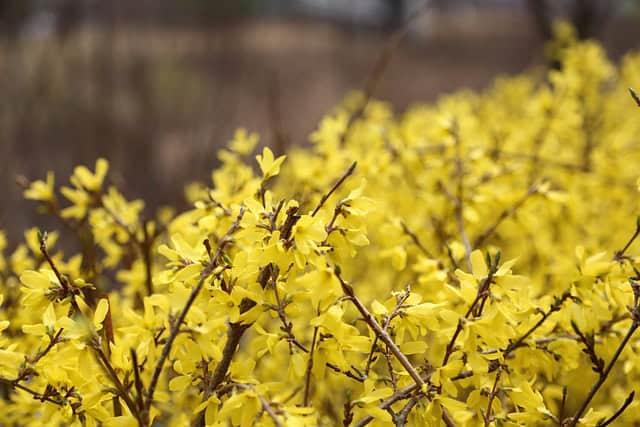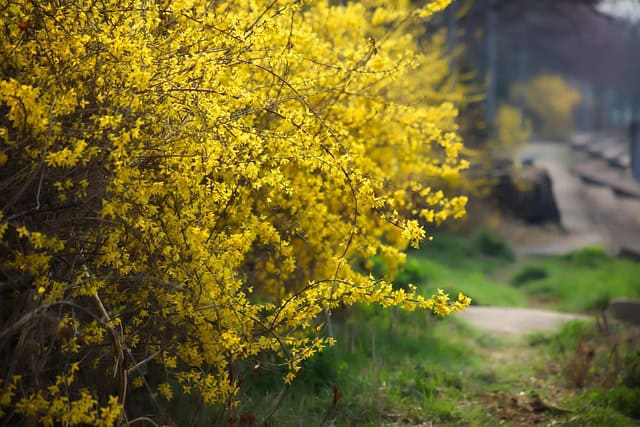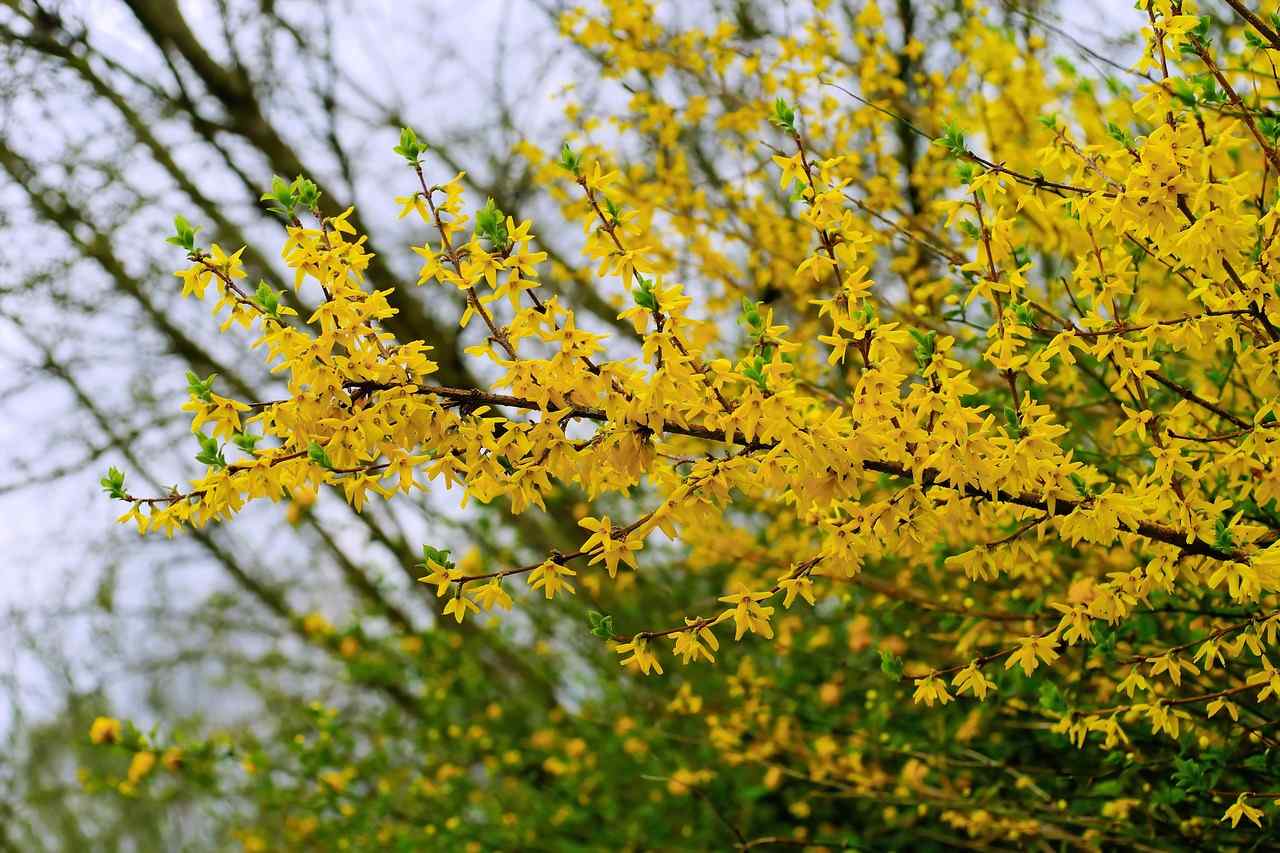This guide will walk you through the different methods of propagating Forsythia, ensuring you have success in your gardening journey.
Understanding Forsythia

Before jumping into propagation techniques, it’s helpful to understand what Forsythia is. This deciduous shrub belongs to the Oleaceae family and is native to Asia and southeastern Europe. Forsythia is known for its rapid growth and can reach heights of 8 to 10 feet with an equal spread, making it a great choice for hedges or ornamental purposes. It thrives in a variety of soil types and conditions, adding to its popularity among gardeners.
When to Propagate Forsythia
The best time to propagate Forsythia is during the spring or late summer. Spring propagation allows you to take advantage of the plant’s natural growth cycle, while late summer can be ideal for taking semi-hardwood cuttings. Timely propagation will give your cuttings the best chance to root and thrive.
Methods of Propagation
Stem Cuttings
Propagating Forsythia from stem cuttings is one of the simplest and most effective methods. Here’s how to do it:
Materials Needed:
Sharp garden pruners or scissors
Rooting hormone (optional)
Potting soil or a seed-starting mix
Pots or containers
Plastic bag or plastic wrap (to create humidity)
Steps:
Select Healthy Parents: Choose a healthy Forsythia plant from which to take cuttings. Look for strong, flexible stems that are free from pests and diseases.
Take Cuttings: Using your pruners, cut 6 to 8-inch long sections from the current year’s growth. Make sure to cut just below a leaf node, as this is where roots are most likely to develop.
Prepare the Cuttings: Remove any leaves from the lower half of each cutting. You may choose to dip the cut end into rooting hormone to enhance root development, although Forsythia is known to root well without it.
Plant the Cuttings: Fill your pots with potting soil and make a hole in the center of the soil. Insert the cutting about 2 to 3 inches deep, gently firming the soil around it.
Water and Cover: Lightly water the cuttings and cover the pots with a plastic bag or wrap to maintain humidity. Ensure that the cover does not touch the leaves.
Create Ideal Conditions: Place the pots in a location with indirect sunlight and temperatures between 65-75°F (18-24°C). Keep the soil moist but not soaked.
Monitor for Growth: After a few weeks, check for root development. You can gently tug on the cuttings: if you feel resistance, roots are forming. Once they have a good root system, you can transplant them into larger pots or directly into your garden.
Layering
Another effective propagation technique for Forsythia is layering. This method is particularly useful if you want to propagate larger areas or if you would like to avoid cutting stems.
Steps:
Choose a Flexible Stem: Find a long, flexible stem on the Forsythia plant that can reach the ground.
Bend the Stem: Carefully bend the stem to the ground, ensuring it remains attached to the main plant.
Create a Notch: Make a small notch in the stem where it touches the soil. This will encourage rooting.
Cover the Stem: Using soil, cover the notched section of the stem while still keeping the tip exposed. You can use a rock or a weight to keep the stem in place.
Watering: Keep the soil moist around the covered part of the stem.
Roots Form: After several months, roots should develop. When you notice growth, you can cut the new plant away from the parent plant and transplant it to the desired location.
Tips for Successful Propagation
Monitor for Pests: Keep an eye on your cuttings for any signs of pest infestations. Early detection ensures that you can take action before significant damage occurs.
Be Patient: While Forsythia is generally easy to propagate, it can take a few weeks to months for cuttings to root. Be patient and give them the time they need to establish healthy root systems.
Avoid Overwatering: Too much moisture can lead to rot. Ensure your soil has good drainage and only water when the top inch feels dry to the touch.
Label Your Cuttings: If you are propagating multiple varieties or conducting experiments with different techniques, labeling your cuttings can help keep track of which methods are working best.
Provide Indirect Light: Young cuttings are sensitive and should be protected from harsh sunlight. Place them in a well-lit but indirect light location to encourage growth without burning the leaves.
Transplanting Forsythia
Once your cuttings have developed a strong root system, it’s time to transplant them. Here’s how to do it effectively:
Choose the Right Time: Early spring or fall is the optimal time to transplant Forsythia to avoid stress on the plant due to extreme heat or cold.
Prepare the New Location: Select a spot in your garden that receives full or partial sunlight. Amend the soil with compost or a balanced fertilizer to provide essential nutrients.
Dig a Hole: Make a hole that’s slightly larger than the root ball of your Forsythia cutting. This gives the roots plenty of room to spread.
Carefully Transfer the Plant: Gently remove the cutting from its pot, taking care not to damage the roots. Place it in the hole and fill it with soil, ensuring that the base of the plant is level with the surrounding soil.
Water Generously: Water the newly transplanted Forsythia thoroughly to help settle the soil around the roots.
Mulch the Area: Applying a layer of mulch around the base of the newly transplanted Forsythia can help retain moisture and suppress weeds.
Caring for Your New Forsythia Plants

Once your Forsythia cuttings are in the ground or in larger pots, ongoing care is essential for their continued growth.
Watering: Keep the soil consistently moist during the first year, especially during dry spells, to help establish a solid root system.
Pruning: After the first bloom, you might consider light pruning to shape the plant and remove any dead or damaged branches. This encourages bushier growth and more blooms in subsequent years.
Fertilization: In early spring, a balanced fertilizer can help jumpstart growth. Follow the manufacturer’s instructions for the right application rates.
Monitoring Health: Keep an eye out for any diseases or pests, such as aphids or spider mites. Early intervention can prevent serious damage and keep your plants healthy.
Final Thoughts
Propagating Forsythia is not only a cost-effective way to fill your garden with these charming shrubs, but it’s also an opportunity to connect with nature. Watching your cuttings transition from small stems to thriving plants can be incredibly satisfying.
Whether you choose to propagate through stem cuttings or layering, these methods are straightforward and provide an excellent way to expand your garden. With a little time, care, and attention, you’ll be rewarded with a garden full of beautiful, yellow blooms that herald the arrival of spring.
So grab those pruners, get your hands in the soil, and enjoy the journey of propagating your own Forsythia!





